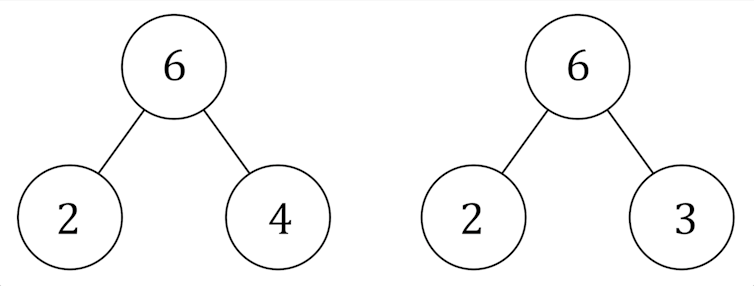Teaching school mathematics is a thing of the past. An adult who revisits the school he attended as a child will see only superficial changes from his own experiences.
Yes, in some schools they may see a room full of electronic tablets or a teacher using a touch-sensitive, interactive whiteboard. But if we look closely at the details (tasks given to students to help them understand the material), things have barely changed.
We’ve learned a lot about cognitive science in recent years, about how our brains work and how people learn most effectively. This understanding has the potential to revolutionize what teachers do in classrooms. However, little use has been made of this information in the design of mathematics teaching materials such as textbooks.
Some of this information is counter-intuitive and therefore unlikely to be implemented unless done deliberately. What students choose to experience and what teachers think will be most effective are often the things that will not be most helpful.
For example, cognitive science tells us that practicing similar types of tasks together often leads to less effective learning than mixing tasks that require different approaches.
A combination of similar tasks in mathematics can be a one-page question, each requiring the addition of fractions. To mix things up; It may involve putting fractions, probability, and equations together in a row.
Students make more mistakes when doing compound exercises and are likely to become frustrated because of this. Therefore, it will probably be much easier for the teacher to group similar tasks together. However, mixed exercises provide the student with important practice in deciding which method he or she should use for each question. This means more information is retained later, making this what is known as “desirable difficulty.”
Applied cognitive science
We are just beginning to apply findings like these from cognitive science to design better teaching materials and support teachers in using them. It makes sense to focus on school mathematics because mathematics is a compulsory subject that many people find difficult to learn.
Typically school teaching materials are selected based on instinctive reactions. A department chair looks at a new textbook plan and chooses the one that looks best to him based on his experience. What else could they be expected to do? But even the best materials presented are often not designed with cognitive science principles such as “desirable difficulty” in mind.
My colleagues and I explore educational designs and develop materials for schools that apply principles ranging from cognitive science to mathematics teaching. These materials are not designed to look easy, but to contain “desirable challenges.”
They are not broken into individual lessons because this pushes the teacher to continue when the clock says so, regardless of the student’s needs. Being sensitive to students’ evolving understandings and challenges requires materials designed for the size of ideas, rather than materials that can comfortably fit into a two-page textbook or a 40-minute class period.
I’m changing jobs
Adopting a cognitive science-led approach also means changing the way mathematical concepts are explained. For example, diagrams have always been a prominent feature of mathematics teaching, but they are often used haphazardly depending on the teacher’s personal preference. Textbooks are quite limited due to space constraints.
The use of similar-looking diagrams on different topics and for very different purposes often leads to confusion. For example, three circles connected as shown below may indicate division by an addition (“part-whole model”) or by the product of prime factors.
These involve two different processes, but are often represented by the same diagram. Using the same type of diagram to represent conflicting operations (addition and multiplication) causes students to confuse them and become confused.

Cognitive science’s “consistency principle” means avoiding diagrams where their disadvantages outweigh their benefits and using diagrams and animations in a purposeful, consistent manner across subjects.
For example, number lines can be introduced at a young age and incorporated into many subject areas to provide consistency to students’ developing understanding of numbers. Number lines can be used to solve equations and represent probabilities, for example.
Unlike the circle diagrams above, the uses of the number lines shown below do not conflict but reinforce each other. In each case, positions on the number line represent increasing numbers from zero on the left to the right.




There are disturbing inequalities in mathematics learning; Students from poorer backgrounds underachieve than their wealthier peers. There is also a large gender participation gap, with more boys than girls taking part in mathematics at A-level and beyond.
Socio-economically advantaged families have always been able to save their children from difficulties by using private tutors, but less privileged families cannot do this. Higher quality instructional materials based on insights from cognitive science mitigate the impact on students who have traditionally been disadvantaged in learning mathematics due to gender, race, or financial background.
This article is republished from The Conversation under a Creative Commons license. Read the original article.


Colin Foster receives funding from Research England and the UKRI Economic and Social Research Council. He works at Loughborough University and is Director of the Loughborough University Mathematics Education Network.